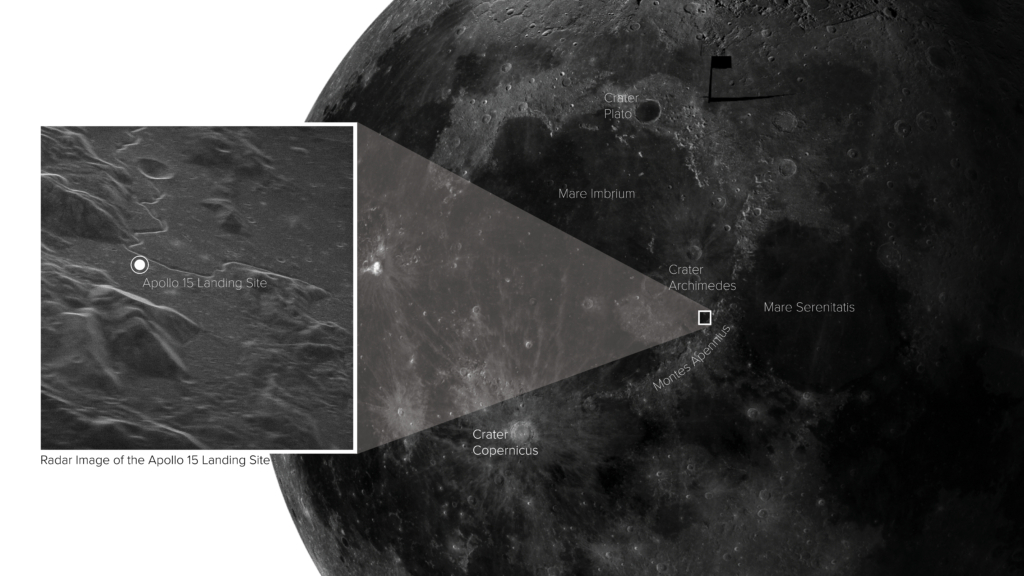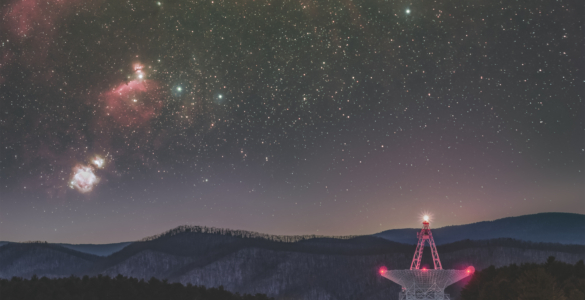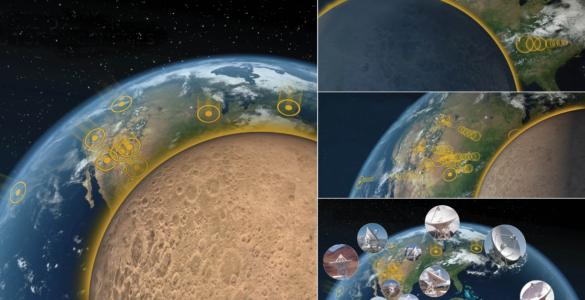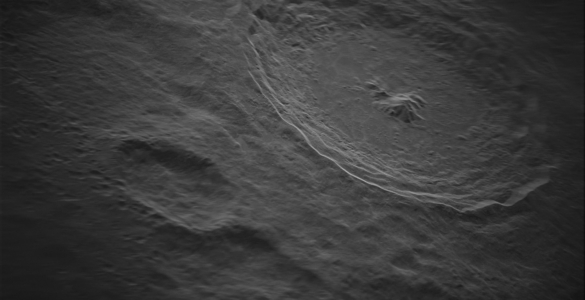New Technologies, New Possibilities
While most radio astronomy passively observes the radio light emitted from celestial objects, radar astronomy bounces radio light off objects in our solar system. By observing the light that reflects off these objects, astronomers can study their composition and motion. Radar astronomy has been used to precisely measure the position and motion of the planets, allowing us to land probes on Mars and explore the outer solar system. The technique has also made surprising discoveries, such as the presence of water ice on Mercury.

Creating Together
The Next Generation Radar program (ngRADAR) is a collaboration between the National Radio Astronomy Observatory (NRAO), Green Bank Observatory (GBO), and Raytheon Technologies. Together they will create an active radar system for GBO’s 100-meter Green Bank Telescope (GBT) using the latest solid-state technology. For twenty years, Green Bank Observatory’s 100-meter radio telescope has studied the radio sky. It has made amazing discoveries, from seeing the vast molecular clouds that surround distant galaxies, to mapping the magnetic fields around the Orion Nebula. The ngRADAR program will further expand the capabilities of the GBT.
How Does It Work?
Radar signals transmitted by the GBT will reflect off astronomical objects, and these reflections will be received by the Very Large Array (VLA) and the Very Long Baseline Array (VLBA). When finished, it will be the most advanced radar astronomy tool ever built. It will allow astronomers to answer big questions about our solar system, such as the composition of asteroids and the origins of our solar system. It will also help us defend against potential large meteor strikes on Earth by mapping the precise trajectories of asteroids that cross Earth’s orbit.
But perhaps the most exciting discoveries are the ones we haven’t yet imagined. The ngRADAR program will give astronomers an amazing new technology to explore the heavens, and what they find with it is sure to be equally amazing.




